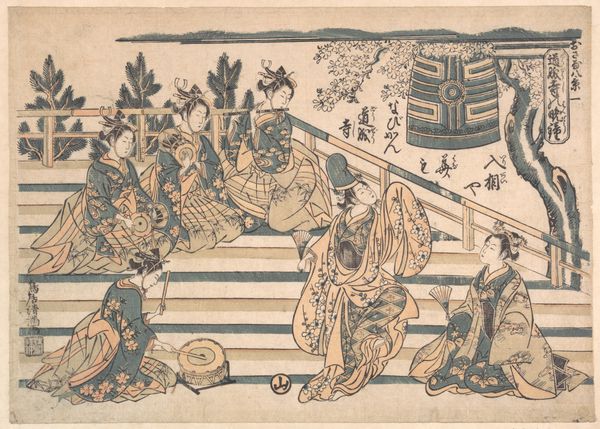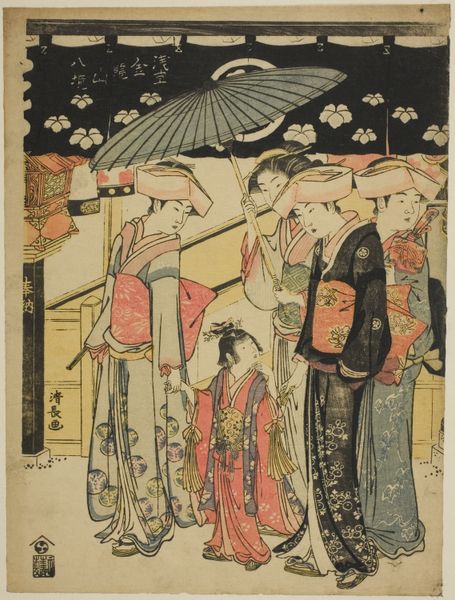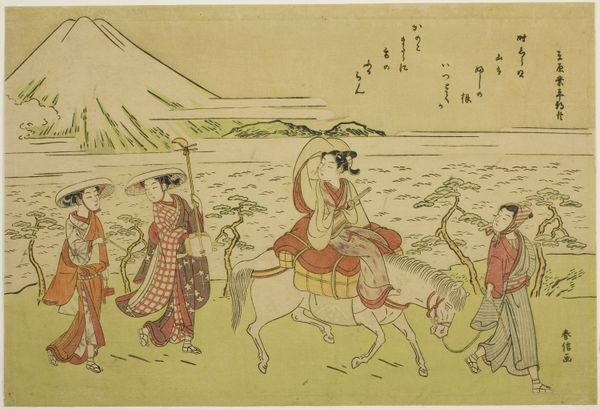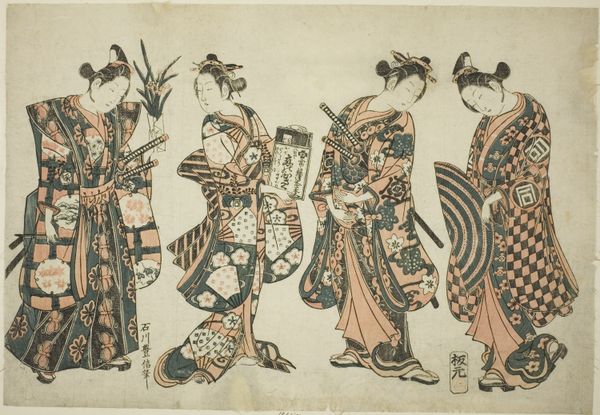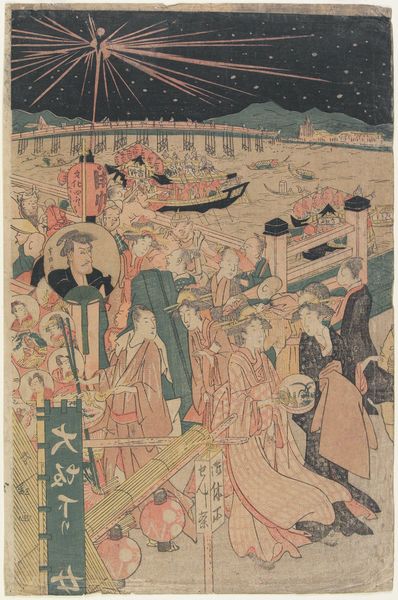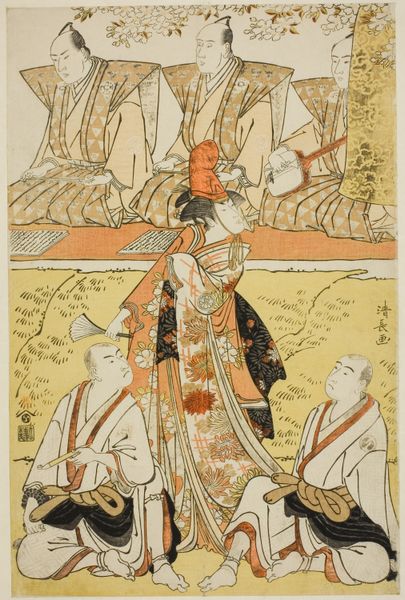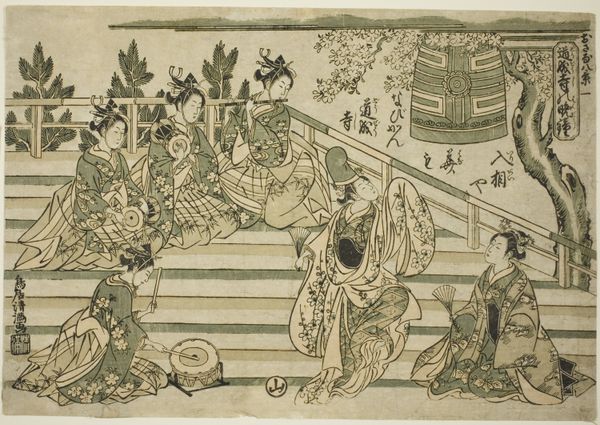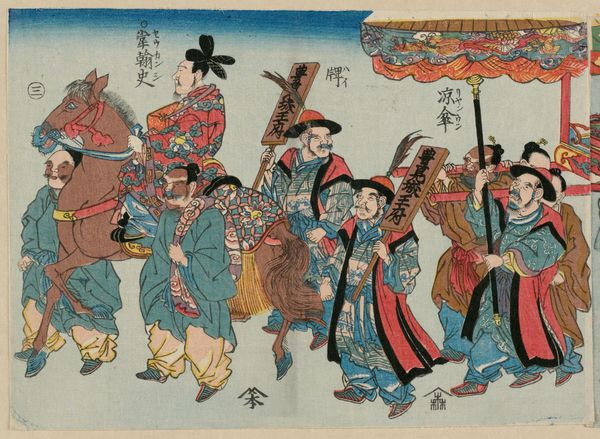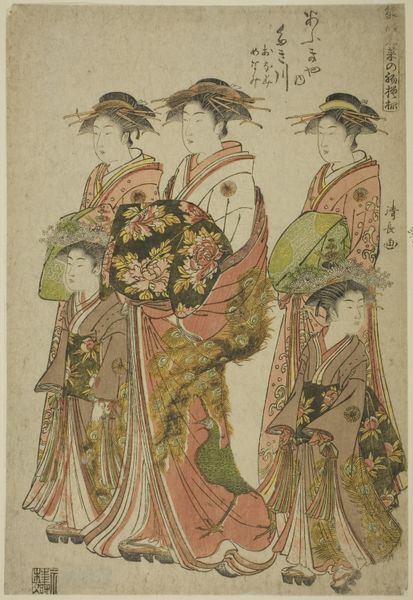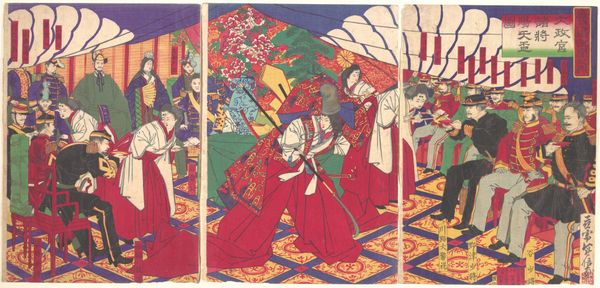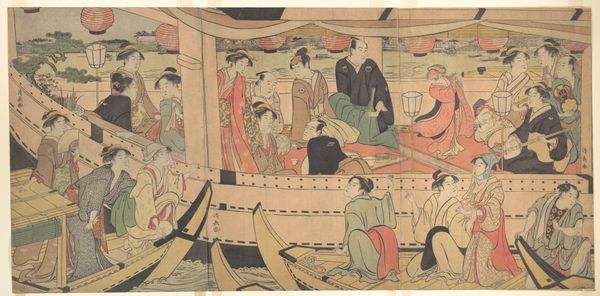
print, woodblock-print
# print
#
asian-art
#
landscape
#
ukiyo-e
#
figuration
#
woodblock-print
#
genre-painting
Dimensions: 27.9 × 41.4 cm (11 × 16 5/16 in.)
Copyright: Public Domain
Editor: So this is Torii Kiyomitsu’s “A parody of Narihira's eastern journey,” a woodblock print from around 1764. There's a strange combination of elegance and humor that comes across – what stands out to you? Curator: The immediate symbolic jolt comes from the inversion. Kiyomitsu is playfully referencing, perhaps subverting, the well-worn tropes of classical literature, specifically, Narihira’s journey. But instead of stoic travelers, we see fashionable figures in what appears to be a staged, almost theatrical procession. How do the costumes strike you? Editor: I notice that, despite being a parody, everyone is in elaborate robes, and they still have their swords. They look prepared for a real journey. Curator: Precisely. It's in that tension that the humor resides. The cultural memory of Narihira’s journey would have been deeply embedded in the viewers of the time. By recasting it with contemporary figures and perhaps mocking the conventions, Kiyomitsu’s creating a dialogue between past and present. What do you make of the stylized landscape? Editor: It feels almost dreamlike, not really like a specific place. It does hint at the journey aspect without needing to be geographically accurate. The rising rays or light are compelling. Curator: Indeed, and that ties back to the idea of transformation. Journeys are symbolic transformations, shifts in identity. Here, the artist might be saying that even parody can carry the weight of deeper meaning. It calls to mind what Carl Jung called 'archetypes.' Does that connection resonate with you? Editor: That's a really interesting point, that parody itself has a symbolic function! I'll definitely think about this work differently now. Curator: And I'm left pondering on how parody cements what we hold sacred, just by mimicking or upending it. A curious feedback loop through imagery!
Comments
No comments
Be the first to comment and join the conversation on the ultimate creative platform.


